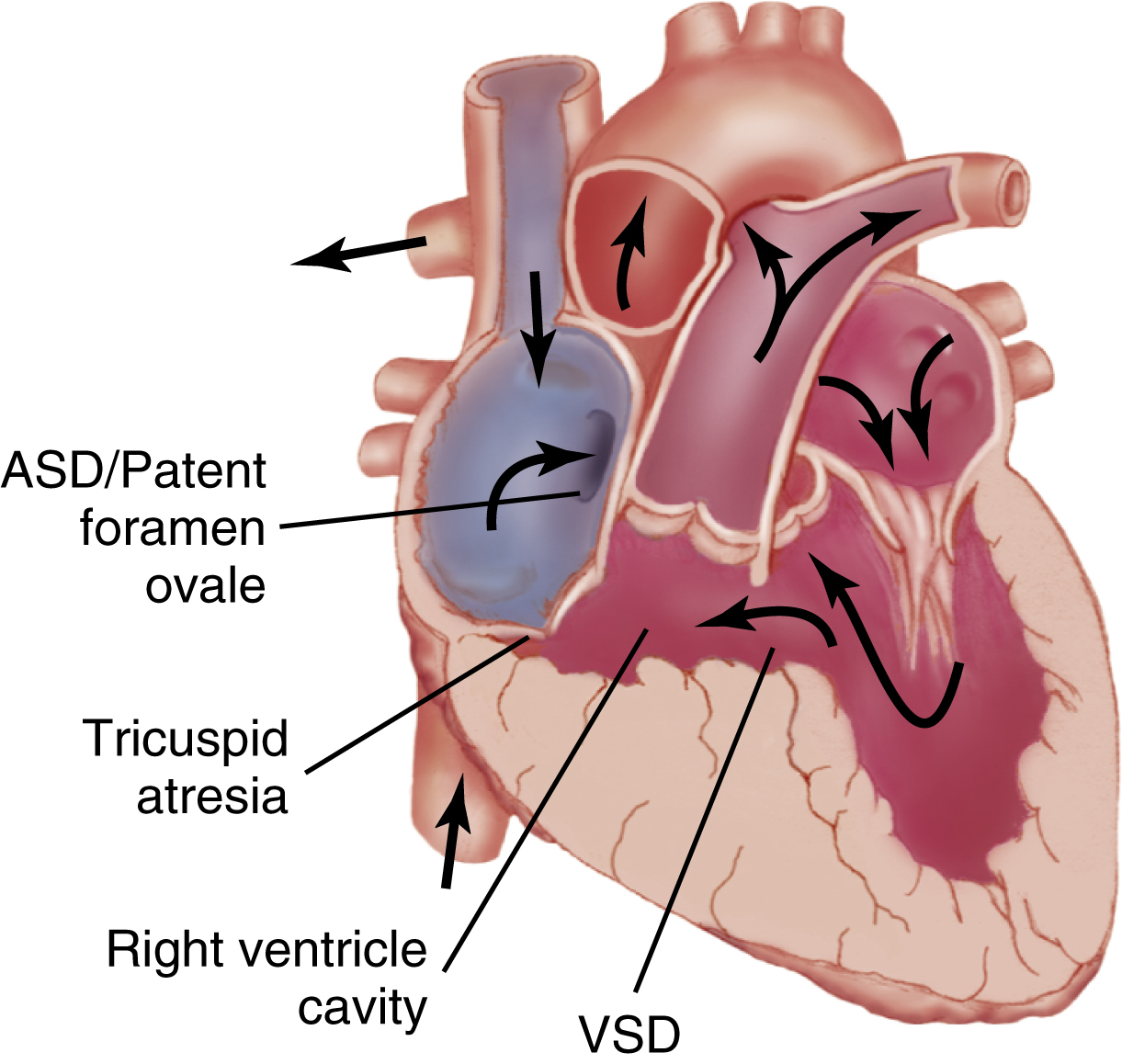tricuspid atresia, a congenital cardiac anomaly characterized by the absence of the tricuspid valve so that there is no opening between the right atrium and right ventricle. Other cardiac defects, such as atrial and ventricular septal defects, are usually present, allowing some shunting of blood into the lungs. Clinical manifestations include severe cyanosis, dyspnea, anoxia, and signs of right-sided heart failure. Definitive diagnosis is made by cardiac catheterization, although radiographic studies usually reveal a small, underdeveloped right ventricle and large atria, giving the heart a round shape, and decreased pulmonary vascularity. Immediate palliative treatment includes pulmonary artery anastomoses to increase blood flow to the lungs and atrial septostomy if the atrial septal defect is small. Total corrective surgery has been successful in a limited number of older children.

